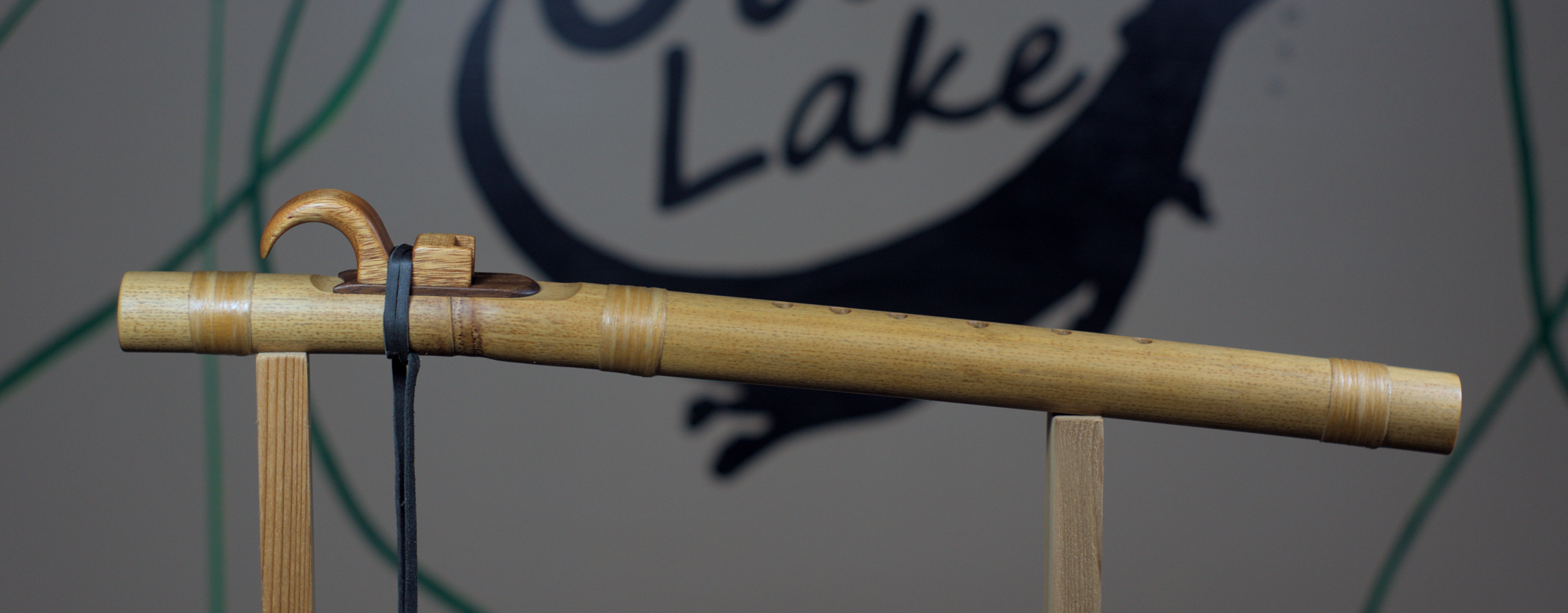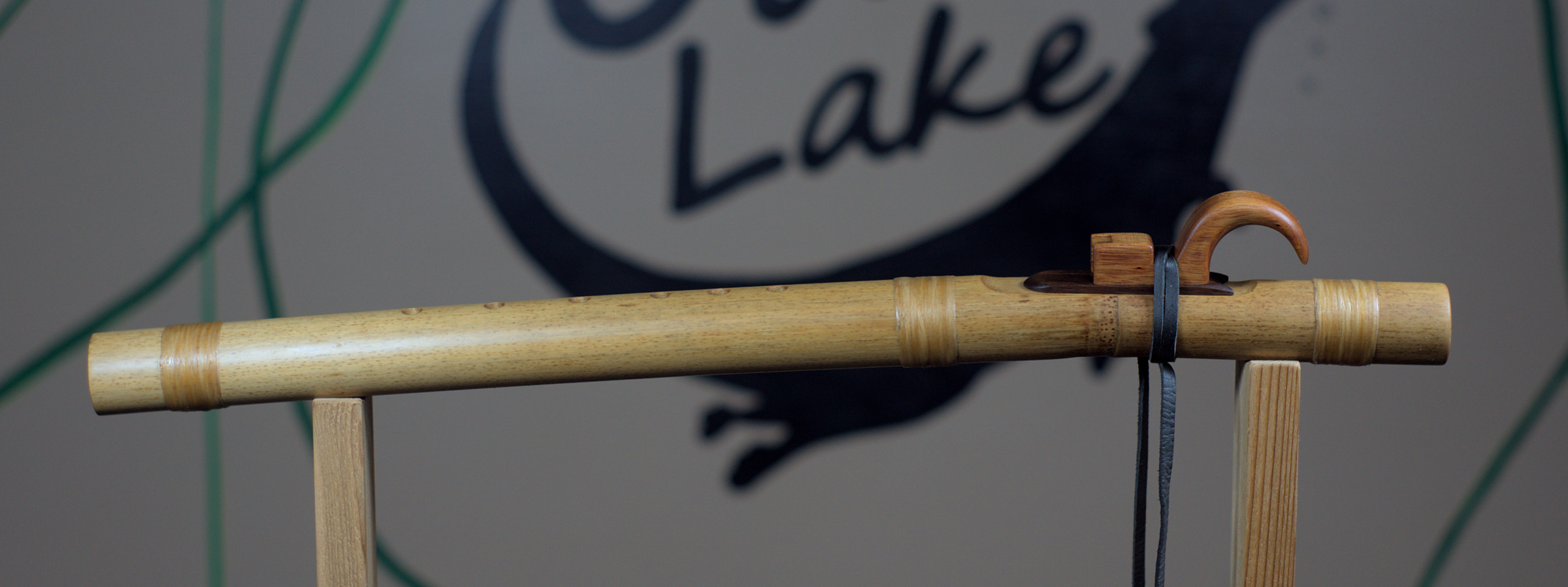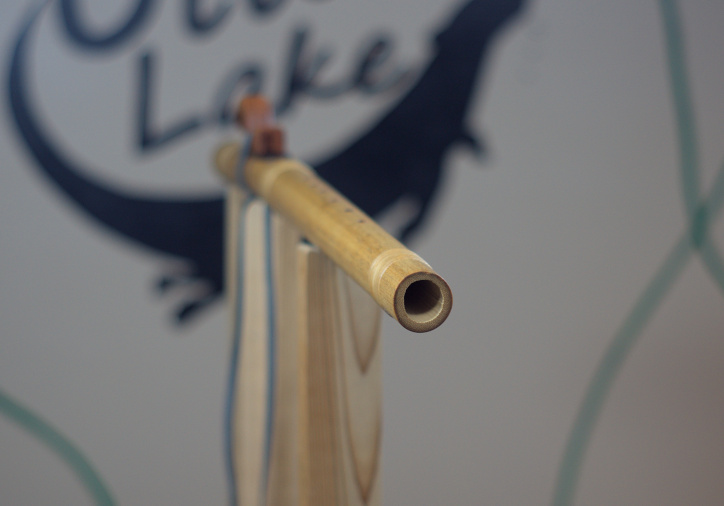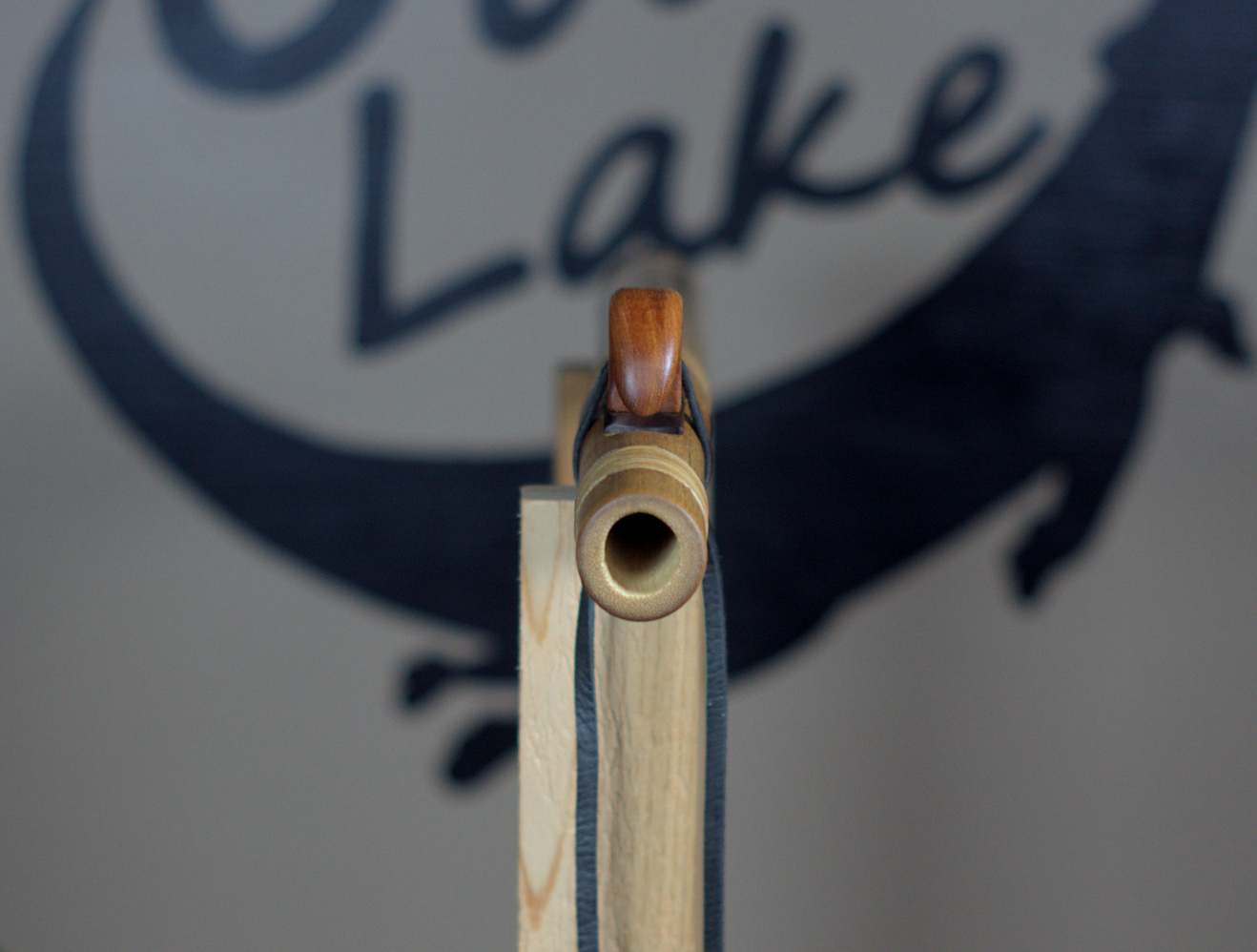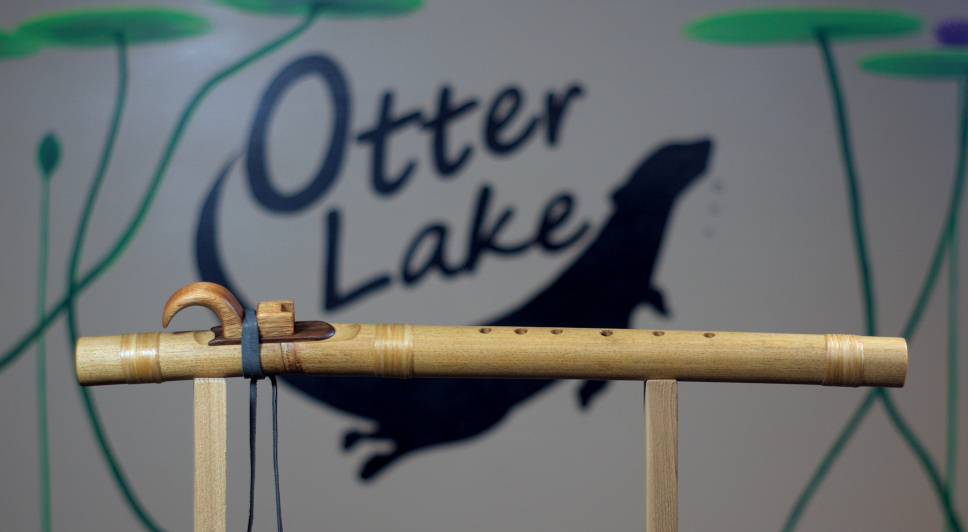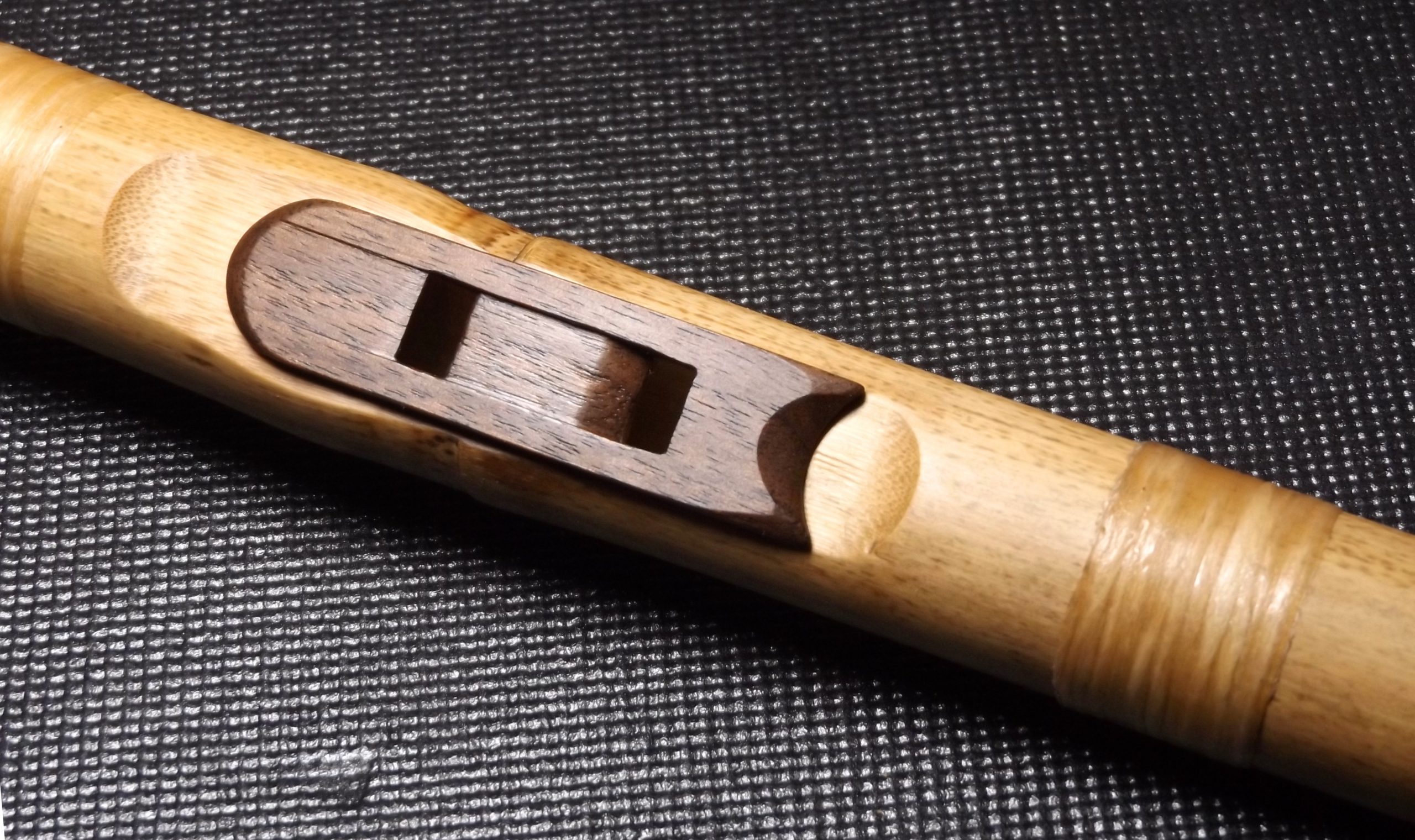SOLD
This unique, mid-sized Native American style flute is made of genuine, indigenous River Cane grown here in my town. The bird is made of very special Mimosa tenuiflora, or M. hostilis wood (see footnotes below under * Mimiosa for details).
Note how the shape of this cane has a graceful, downward curve to it after the node. See pics, above, with it held down in front, or not, either way. I like to hold the South end down like the first two pics.
There is no tapered or narrow-diameter mouthpiece on this cane model — see footnotes, below, under ** Mouthpiece for details.
With a fundamental (lowest) note of A4, the flute is tuned to today’s standard, pentatonic minor scale but can also be played chromatically with intuitive cross-fingerings, beyond a single octave. This, along with lack of hiss and controlled overblow, make this a premium, concert-ready instrument.
The nest is made out of black walnut with care and precision, separately, and added to the cane. I picked up this particular method (as opposed to always carving the nest into the cane) by observing contemporary Native American flute maker James Gilliland. I find it gives me welcome control and consistency in making and playing.
This particular flute is finished with all-natural oils and waxes with the exception of the artificial sinew used for binding (the 3 wrapped areas).
* Mimosa: Mimosa tenuiflora (previously M. hostilis) is a shrub that is the primary ingredient in ceremonial “Ayahuasca” brew from South American tribes. They didn’t historically make this exact type of North American flute but this “spirit molecule” plant has gained spiritual and scientific respect worldwide. It’s difficult to work with and was not cut to make products, but was wood from a natural freeze pruning (see About for more).
** Mouthpiece: There’s no narrow mouthpiece on this flute like wooden NAF’s. This was quite common in cane flutes; do not let anyone tell you it makes it “not a NAF”, a “NAF/quena hybrid” or anything else erroneous pressuring makers to put mouthpieces on all cane flutes these days to avoid misunderstandings — this is a valid, traditional-style river cane cane NAF option that allows splendid drying & cleaning which is particularly good for cane flutes, and is smooth and comfortable. I can put a mouthpiece on if it’s a deal breaker, and I’ll put on on certain others by default, but I encourage having at least one cane flute this way. And with it being an A flute it helps it be even more compact for carry.

